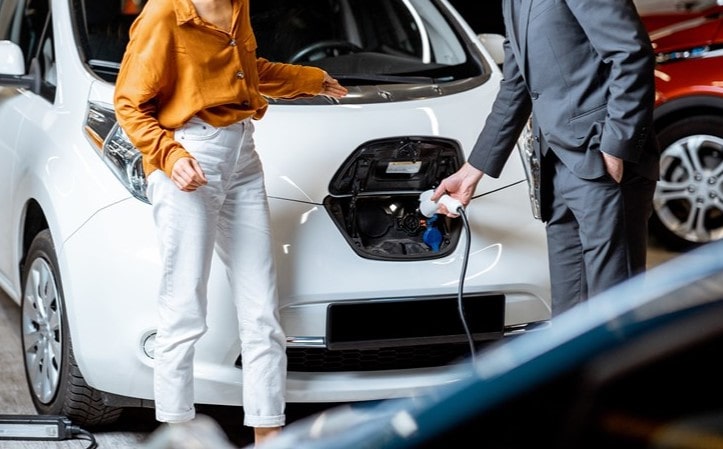Electric cars have garnered significant attention in recent years, hailed as the solution to combatting climate change and reducing our dependence on fossil fuels. While they offer numerous benefits, electric vehicles (EVs) also face a range of challenges that need to be addressed for their widespread adoption. Here, we delve into the complexities and nuances of why electric cars still have some hurdles to overcome.

1. Range Anxiety: The Psychological Barrier
One of the most significant concerns for potential EV buyers is range anxiety. Despite improvements in battery technology, the fear of running out of charge before reaching their destination remains a significant deterrent.
Addressing this psychological barrier requires not only increasing the driving range of electric cars but also building confidence through robust charging infrastructure and accurate range estimation systems.
2. Charging Infrastructure: Bridging the Gap
While the charging infrastructure for electric vehicles has expanded rapidly, it still lags behind the widespread availability of traditional gas stations.
Public charging stations may be sparse in some areas, leading to inconvenience for EV owners, especially on long journeys.
Moreover, different charging standards and incompatible networks create fragmentation and confusion, hindering the seamless charging experience.
3. Environmental Impact: A Complex Equation
While EVs produce zero tailpipe emissions, their environmental impact extends beyond their operational phase.
From the extraction of raw materials for batteries to the energy sources used for electricity generation, the lifecycle analysis of electric cars reveals complex environmental trade-offs.
Balancing the benefits of reduced emissions with the environmental costs of battery production and disposal requires a holistic approach to sustainability.
4. Safety Concerns: Addressing New Risks
Electric vehicles introduce unique safety considerations, particularly concerning battery fires and high-voltage electrical systems.
Firefighting protocols must be adapted to handle EV fires effectively, necessitating specialized training and equipment for emergency responders. Moreover, concerns about the safety of lithium-ion batteries and the risk of thermal runaway highlight the need for rigorous safety standards and robust battery management systems.

5. Financial Considerations: Balancing Costs and Benefits
While electric cars offer potential long-term savings on fuel and maintenance, their upfront cost remains a barrier for many consumers.
The higher sticker price of EVs, coupled with concerns about resale value and battery replacement costs, can make them less financially attractive compared to conventional vehicles. Addressing these financial barriers requires innovative financing options, incentives, and subsidies to make electric cars more accessible to a broader range of consumers.
6. Infrastructure Challenges: Scaling Up Responsibly
Scaling up the production of electric vehicles and their components presents logistical challenges, from securing a sustainable supply of raw materials to expanding manufacturing capacity.
Moreover, the transition to electric mobility requires significant investments in charging infrastructure, grid upgrades, and renewable energy sources to support the growing fleet of electric cars. Collaborative efforts between governments, industries, and stakeholders are essential to overcome these infrastructure challenges responsibly.
7. Technological Innovation: Pushing the Boundaries
While electric propulsion offers numerous advantages, it also presents technological constraints and trade-offs.
Innovations in battery technology, charging infrastructure, and vehicle design are essential to enhance the performance, efficiency, and affordability of electric cars.
Moreover, advancements in autonomous driving, connectivity, and energy storage hold the potential to revolutionize the future of electric mobility and reshape the automotive landscape.
8. Consumer Perception: Shaping the Narrative
The perception of electric cars among consumers plays a crucial role in their adoption and acceptance. Addressing misconceptions, dispelling myths, and raising awareness about the benefits of electric mobility are essential to shift public opinion positively.
Moreover, fostering a culture of sustainability, innovation, and inclusivity can create a supportive ecosystem that encourages individuals to embrace electric cars as a viable transportation solution.
9. Regulatory Landscape: Navigating Complexity
The regulatory landscape surrounding electric vehicles is dynamic and evolving, with governments worldwide implementing policies to promote electric mobility and reduce greenhouse gas emissions.
However, regulatory uncertainty, inconsistent standards, and varying incentives create challenges for automakers, consumers, and charging infrastructure providers. Streamlining regulations, harmonizing standards, and fostering collaboration between policymakers and industry stakeholders are crucial to navigating this complex regulatory landscape effectively.
10. Global Collaboration: Towards a Sustainable Future
Addressing the challenges facing electric cars requires global collaboration and collective action from governments, industries, academia, and civil society.
From research and development to policy formulation and implementation, collaborative efforts are essential to drive innovation, accelerate deployment, and maximize the benefits of electric mobility.
By working together towards a common goal, we can overcome the hurdles and realize the full potential of electric cars in creating a more sustainable and resilient transportation system for future generations.
In conclusion, while electric cars hold tremendous promise for a greener and more sustainable future, they face a range of challenges that must be addressed to unlock their full potential. By tackling these challenges head-on through innovation, collaboration, and policy support, we can pave the way for a transition to electric mobility that benefits society, the economy, and the environment.









